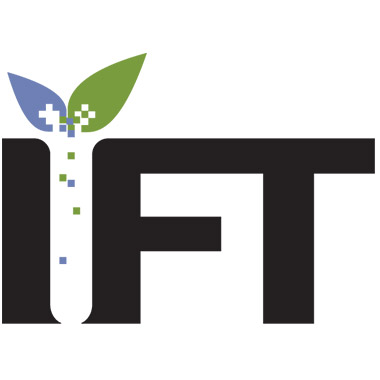Food waste is a massive global problem led by the United States. According to the USDA, an estimated 30–40% of the country’s food supply ends up in landfills—most of it at the retail and consumer levels. This amounted to approximately 133 billion pounds and $161 billion worth of food wasted in 2010 alone, which prompted the USDA and the Environmental Protection Agency to launch the U.S. Food Loss and Waste 2030 Champions initiative in 2016. Businesses and other organizations can join the ranks as champions by committing to a 50% reduction of food loss and waste by 2030.
That’s a noble goal, but those businesses will only be able to achieve their objective with technologies that reduce food waste in production and the supply chain. Food lost in this medium is hardly insignificant. At least 10%—or billions of pounds of food—is wasted in acts as small as over-ordering or in transport. This is, in short, the result of errors in resource planning.
After an extremely difficult year, food process manufacturers can no longer afford to generate that level of waste. Fortunately, technologies already exist to help the industry regain control of its production, storage and forecasting, and can facilitate leaner businesses and less waste.
Eliminate Human Error and System Inconsistencies
There have been a lot of changes in the way food is grown, harvested, delivered and sold over the last few decades, yet little progress has been made when it comes to unnecessary waste. The Commission for Environmental Cooperation reports that food loss and waste can occur post-harvest due to inaccurate supply and demand forecasting, grade standards for size and quality, and deficiencies in refrigeration. Even the packaging can cause problems if it is inefficient or ineffective.
These and other problems lead to waste—some up front before the product is ever sold to consumers, others down the line after an item has been purchased, leading to a recall. If inventory records are anything less than 100% accurate from formulation through shipment, additional challenges will follow. Though it is not heavily considered in an FDA audit, manufacturers still need the ability to instantaneously report on any aspect of their inventory history, regardless of the ERP software from which data is pulled. ERP systems with bolt-on modules often fail in this regard. If functionalities of the sub-systems are not designed for strict lot tracking, or if those sub-systems are not designed exactly the same, errors are inevitable.
Workarounds can be implemented, but they cannot account for processes that still need to be performed manually, which increases the likelihood that lot tracking accuracy will fall short. Inefficiencies are further exacerbated by sub-systems that handle actions differently, but the challenges don’t end there.
Problems can also develop when data has to be shared across more than one module, database or even system, which may inspire the use of outside solutions, such as an Excel spreadsheet, compounding the issues at hand. Makeshift solutions increase the risk that an incorrect lot number will be entered or that someone will forget to delete a number after a lot was de-issued and re-issued. Any of these cracks in the operational foundation will inevitably deduct from the 100% inventory accuracy that’s necessary for a smooth recall process—anything less will lead to a greater impact on the business.
The only real solution is to eliminate the potential for human error and system inconsistencies altogether—and that can only be accomplished with a configurable ERP solution that handles all business processes from one system and one database and can easily adapt to changing regulation and recipes. Without it, true strict lot control—meaning 100% inventory accuracy with perfect record keeping and the ability to instantly report on any aspect of the inventory history—cannot be achieved.
Reduce Inventory Variance and Grow without Unnecessary Expansions
There are aspects of food waste that can be controlled, including inventory variance, which occurs when items are lost, misplaced or miscounted. This is particularly problematic for packaging and ingredients, causing issues at the production level—finished products cannot be made if there aren’t enough items to complete the process, which is also bad for the bottom line. Inventory variance may occur if deliveries are not verified to confirm that ordered ingredients were actually received or may happen if items are entered incorrectly or simply misidentified.
Variance is more than a nuisance—it can be quite costly. For example, Silver Spring Foods encountered this firsthand when it discovered that its inventory variance commonly reached between $250,000 and $300,000. The company, which debuted in 1929 when founder Ellis Huntsinger started growing horseradish and other vegetable crops, now produces the number-one horseradish retail brand in the United States. With more than 9,000 acres of prime Wisconsin and Minnesota farmland, Silver Spring realized that it had outgrown its outdated ERP solution.
The company initially thought that it had reached capacity and could only grow further by physically expanding its building with an additional manufacturing line that would require new hires to come aboard. In reality, the company needed an ERP solution that could keep up with its impressive level of growth.
More specifically, Silver Spring Foods wanted an ERP system that could tie together several elements, including customer service, accounting, manufacturing, purchasing and shipping within a single tool. The company needed a solution that offered strong data mining and reporting functionality, as well as strong sales reporting, sustainable tech support capabilities and would not exceed ERP budget allocations. It was equally important to have an ERP solution that was configurable without customization, prioritizing speed and efficiency while offering predictable quality and cost of ongoing IT support and maintenance.
After upgrading to a solution that met all of its requirements, Silver Spring Foods was able to gather all data in one system that brought together multiple software integrations, including CRM. This allowed the firm to fine-tune its material purchases to match current production needs, sales forecasts and production schedules. More importantly, inventory variance was reduced to $90,000 during the first year and now falls within a range of just $1,800 to $2,500. By improving inventory management, unearthing new efficiencies and proving that Silver Spring had not yet reached capacity, the company was now able to grow without adding additional square footage.
Don’t Let Waste Cut into Productivity
Food growers, processors and supply chains cannot afford to let waste cut into their productivity or their bottom line. They need to be able to keep track of everything, achieving true strict lot control to limit the damage caused by a recall. They also need to be able to improve food management and reduce inventory variance. These and other advantages can only be attained with the right ERP technology, however, so businesses must choose wisely before making an investment.


















